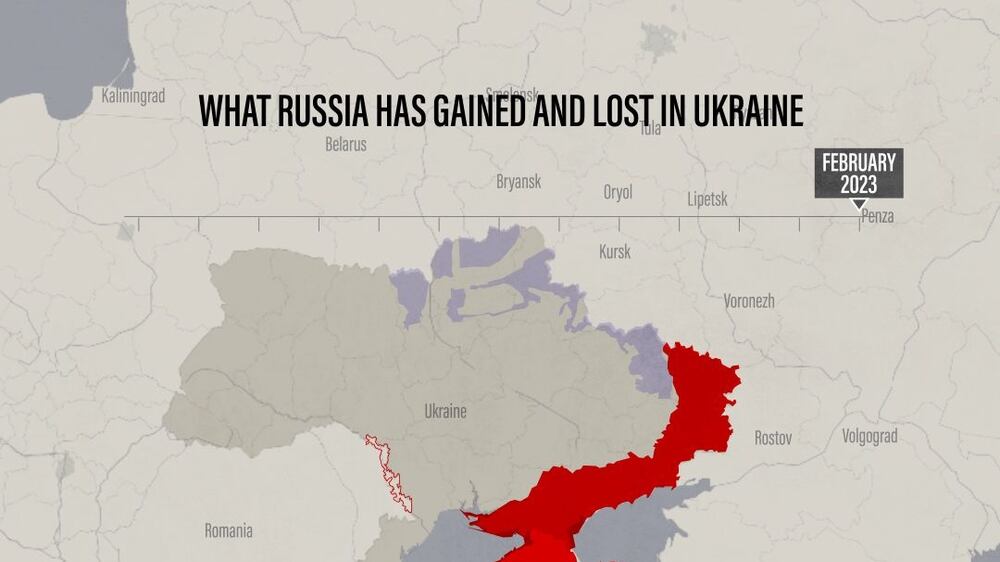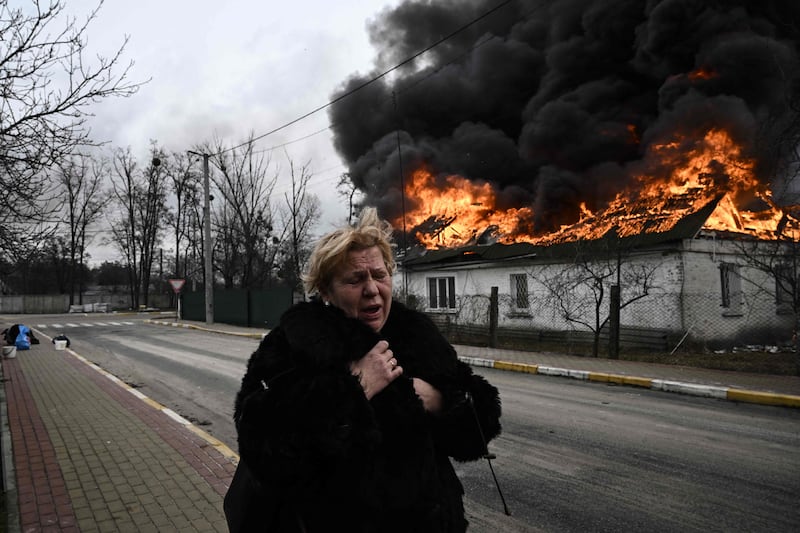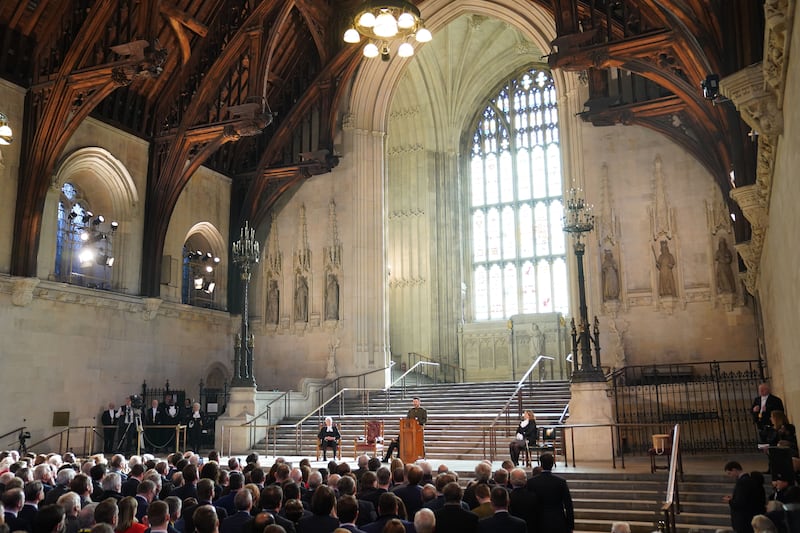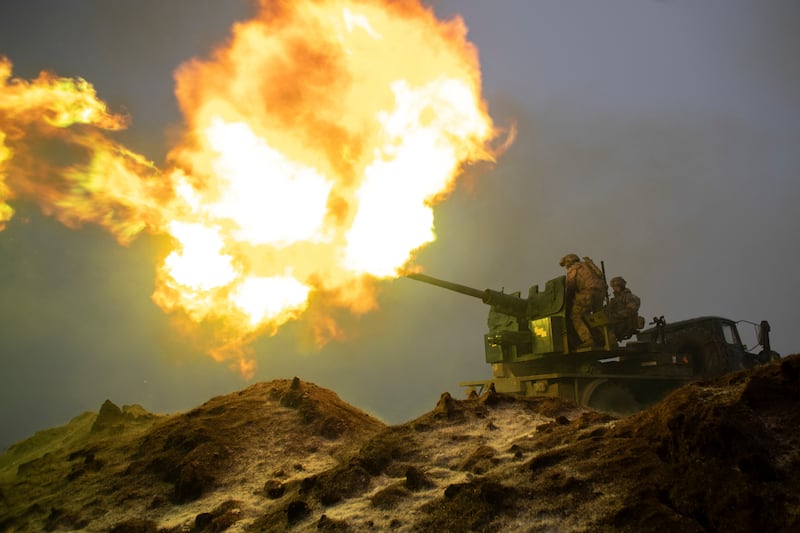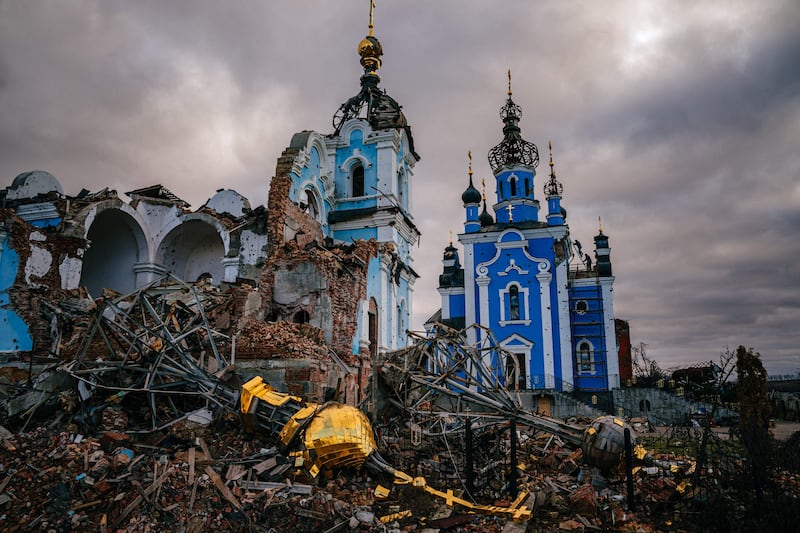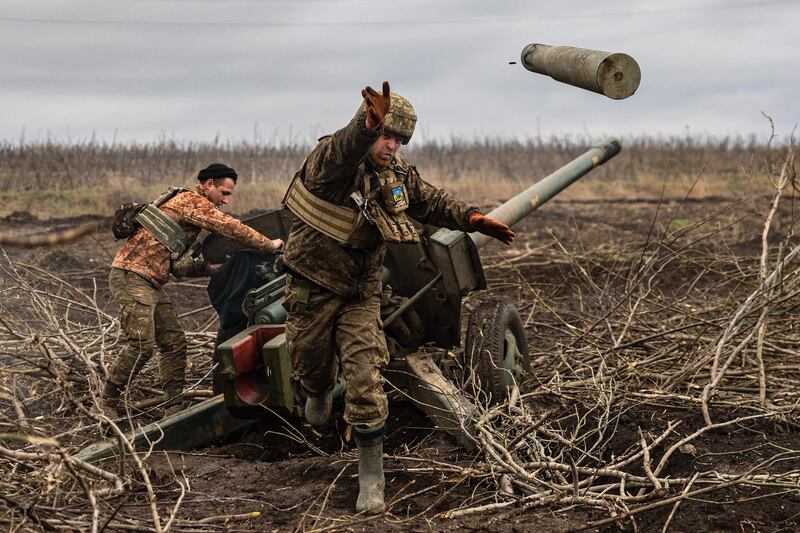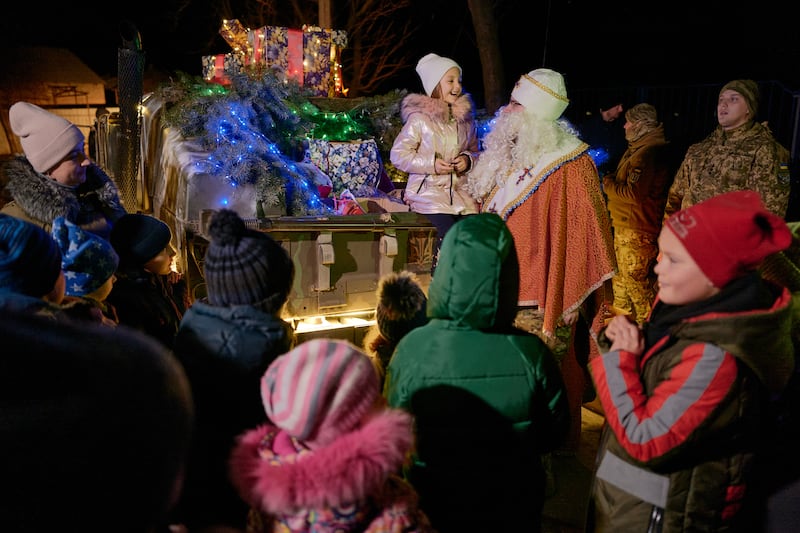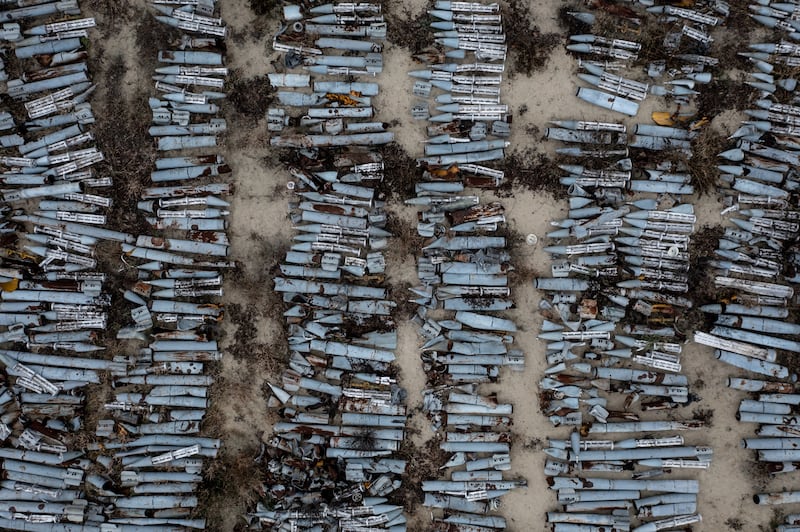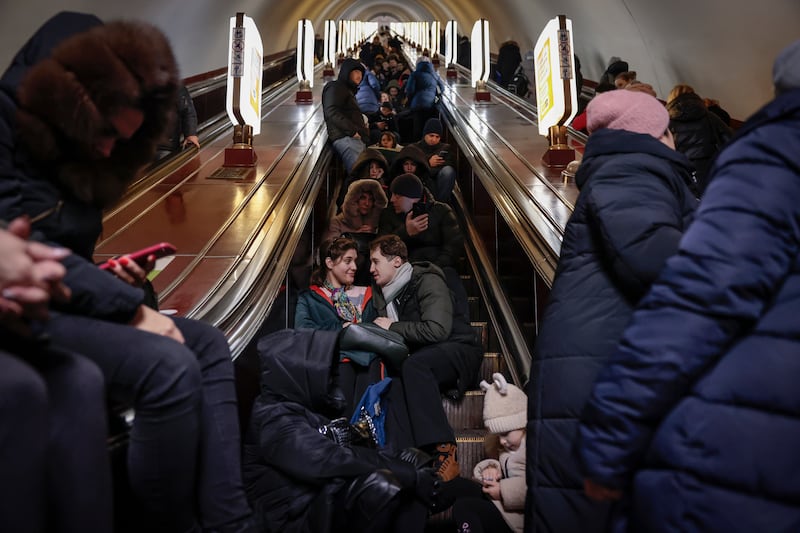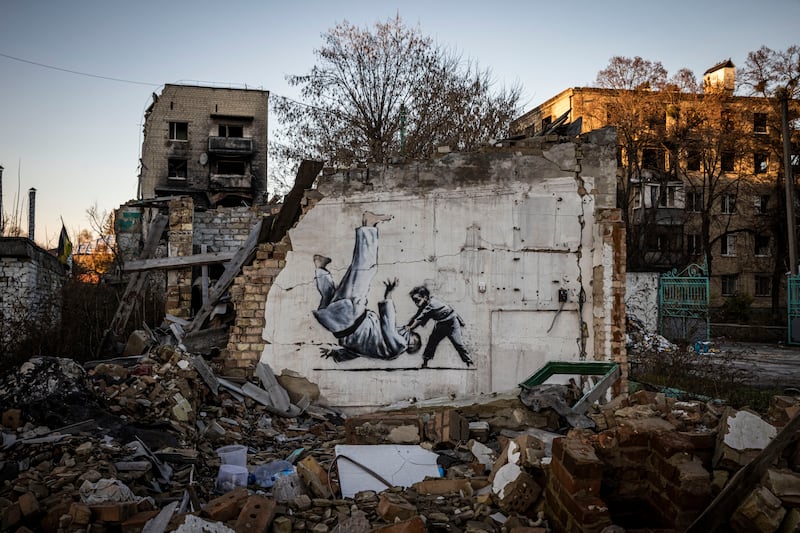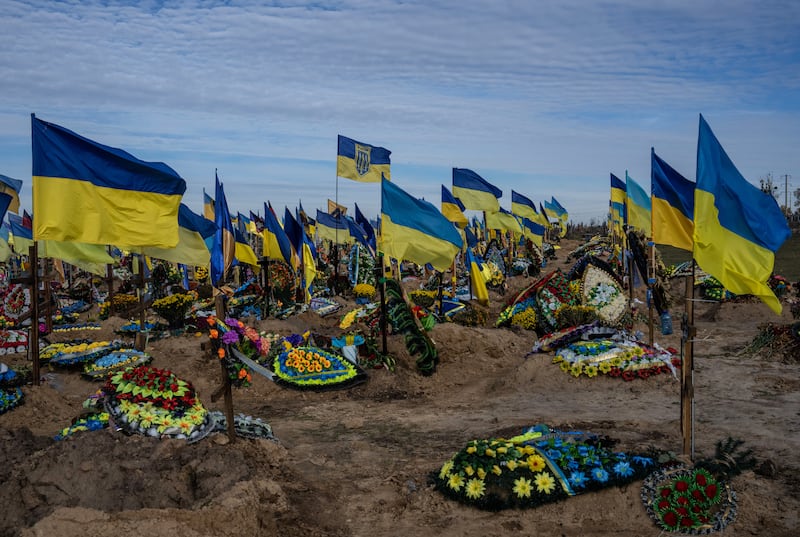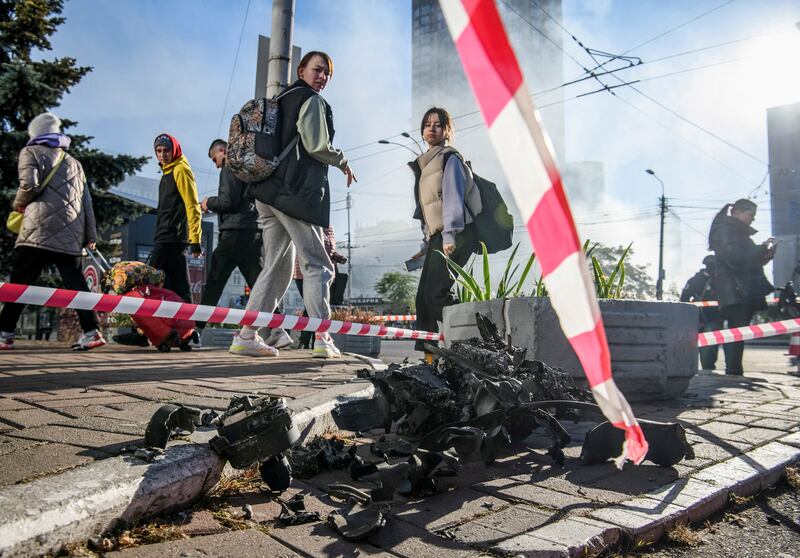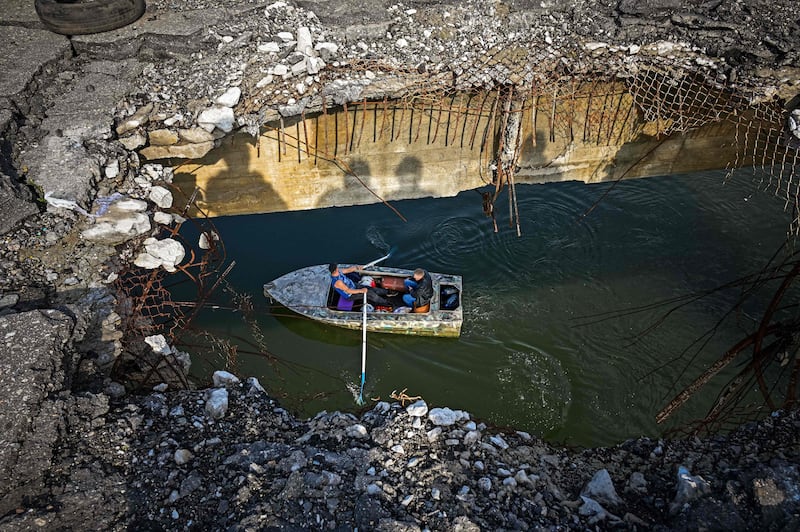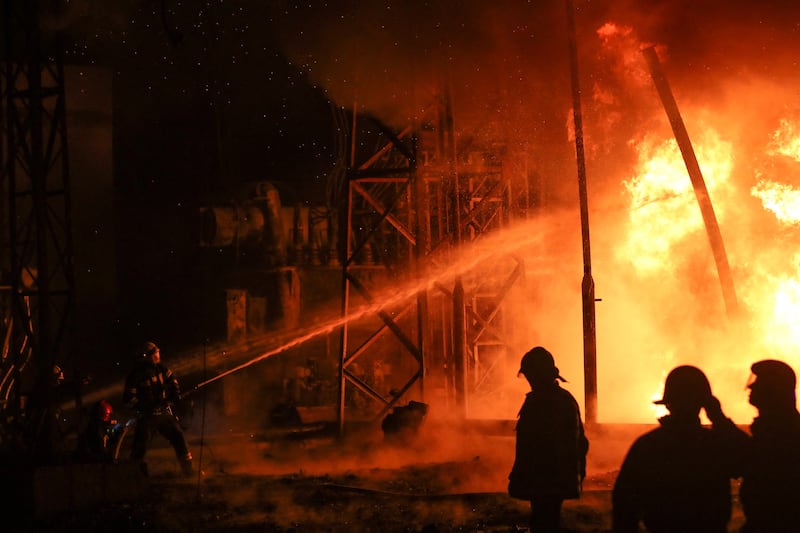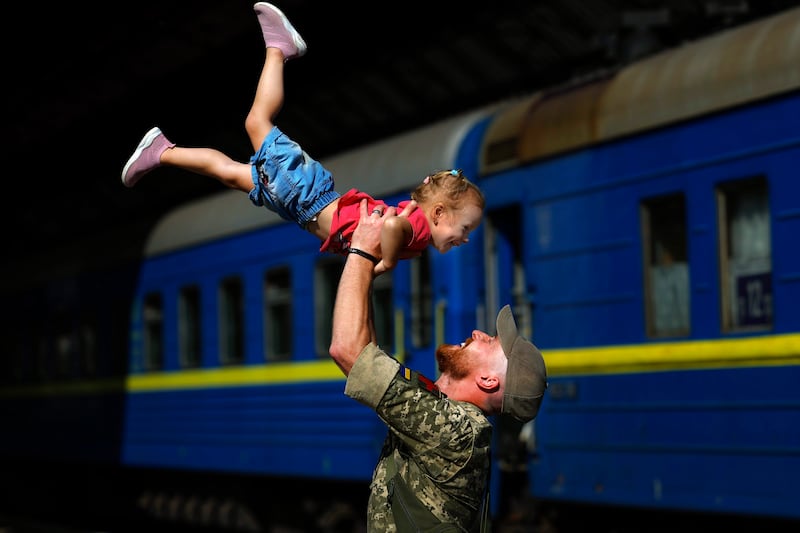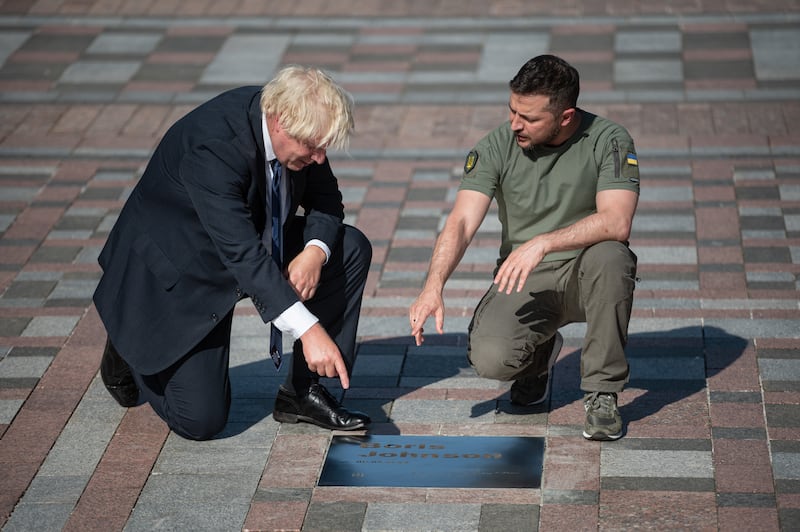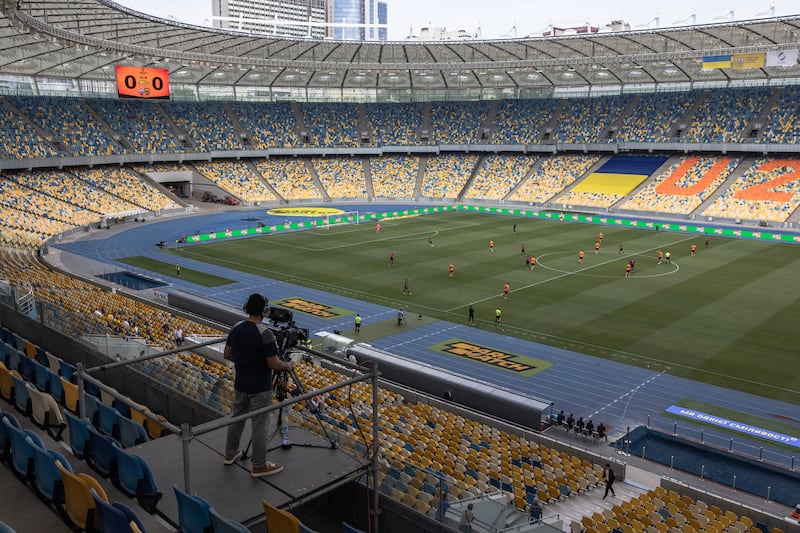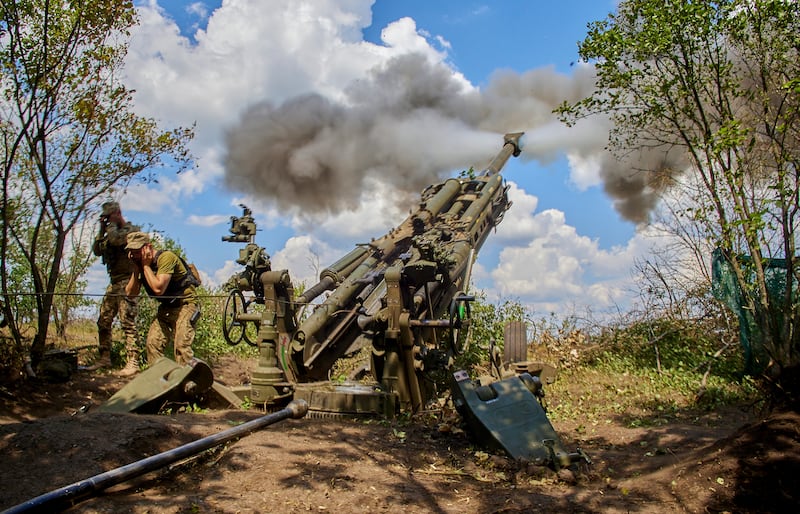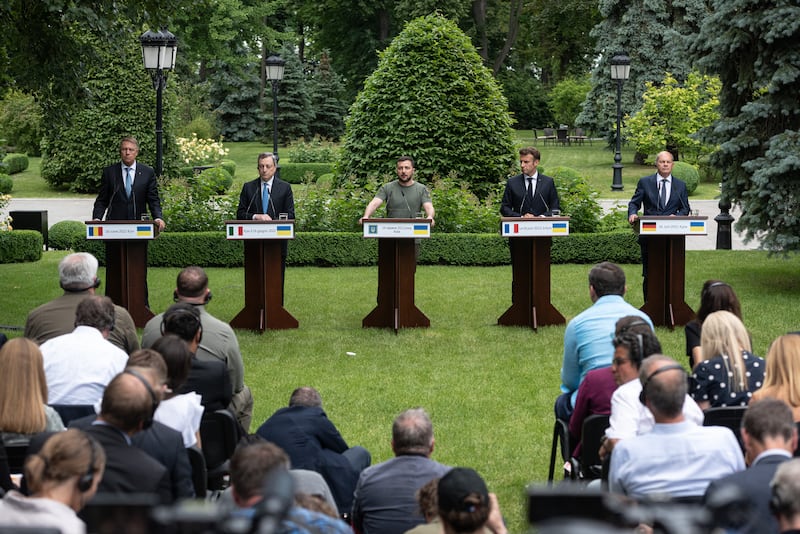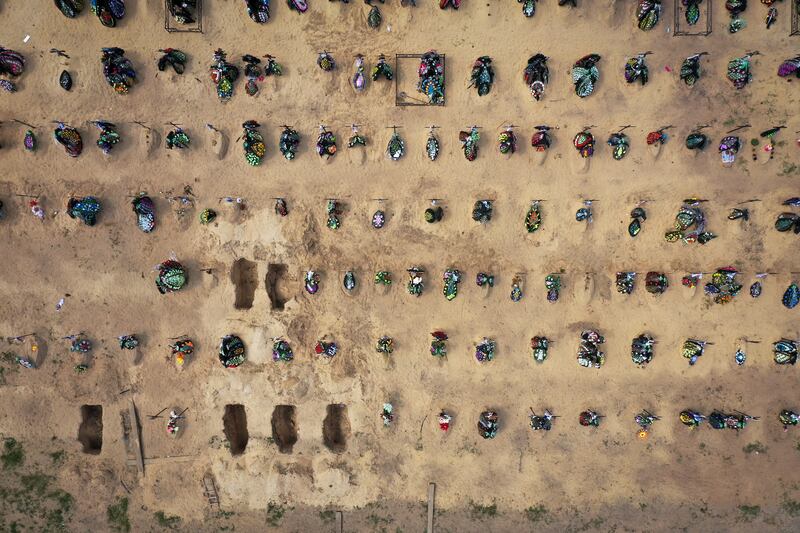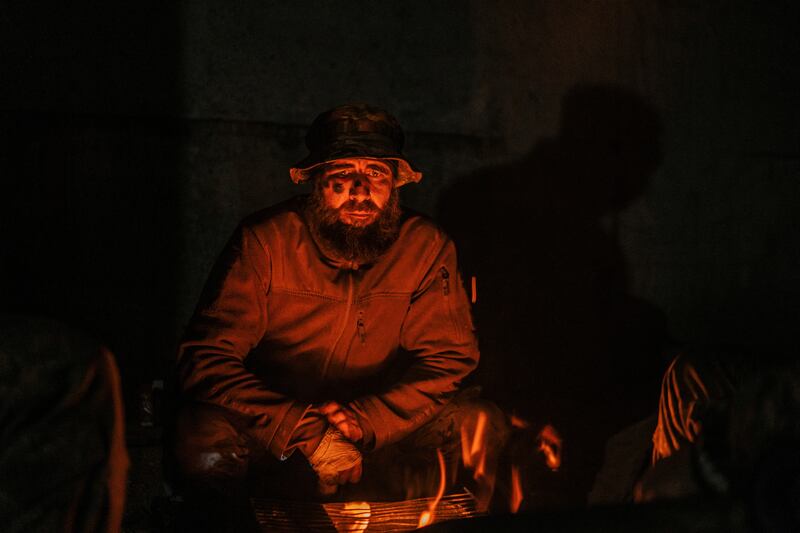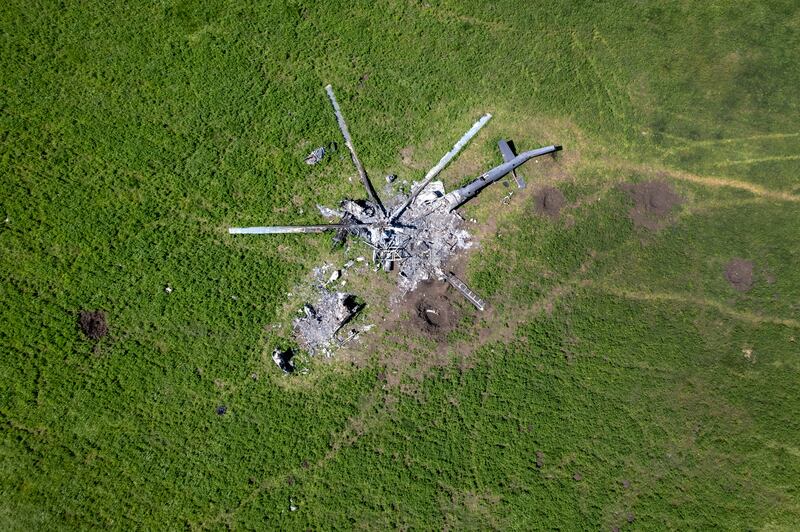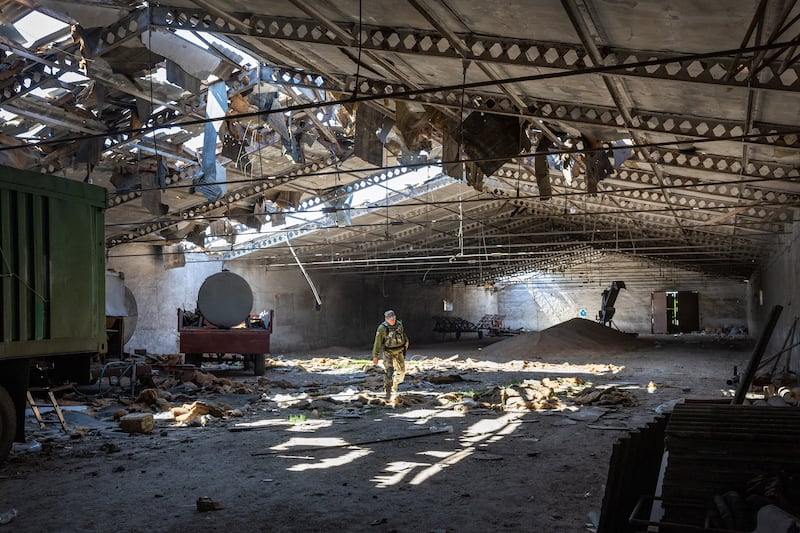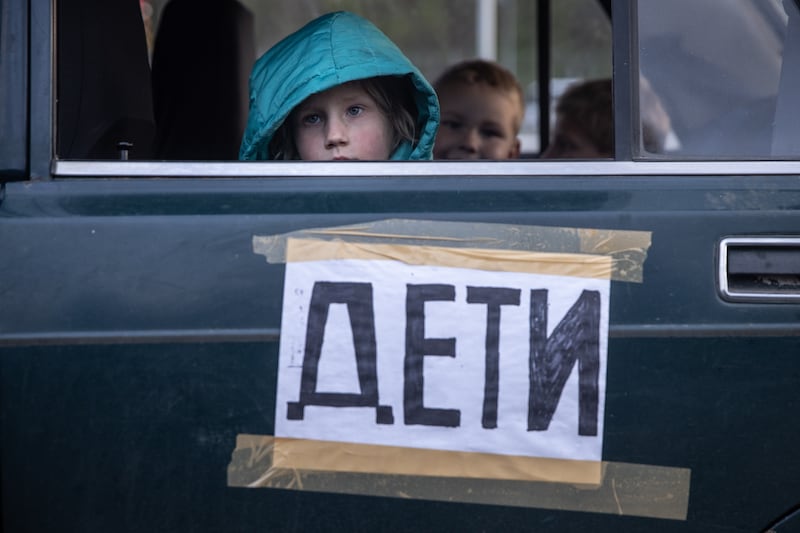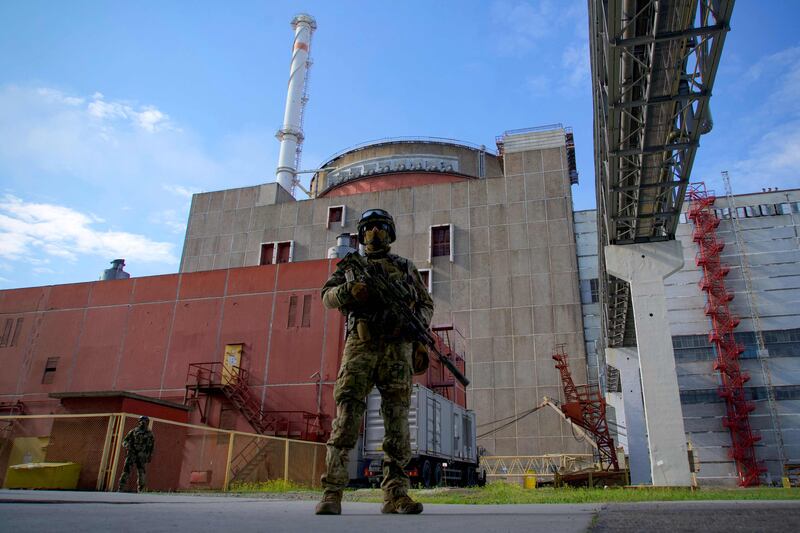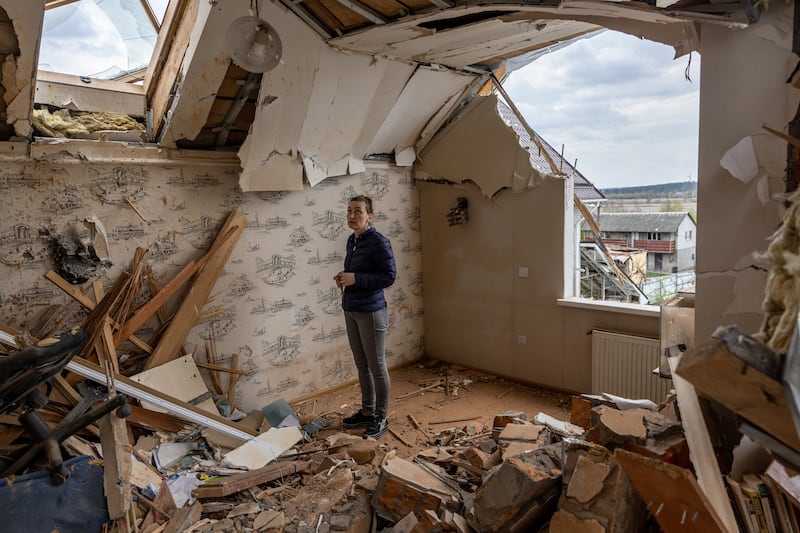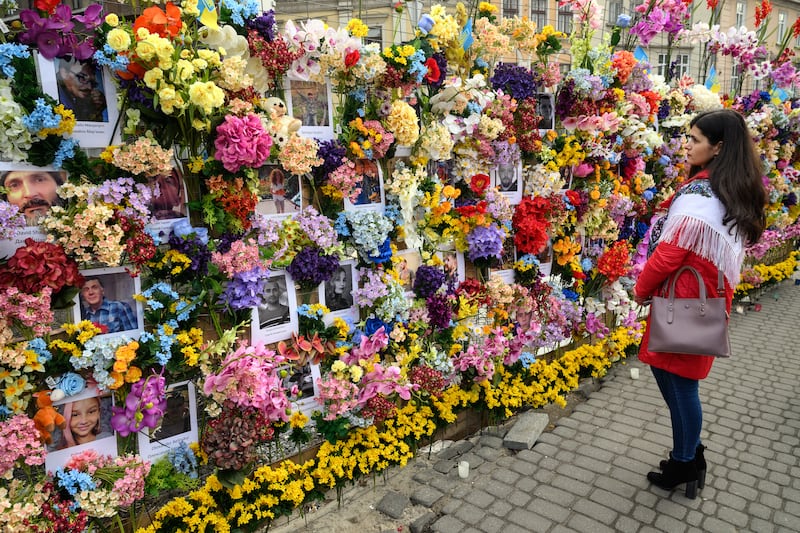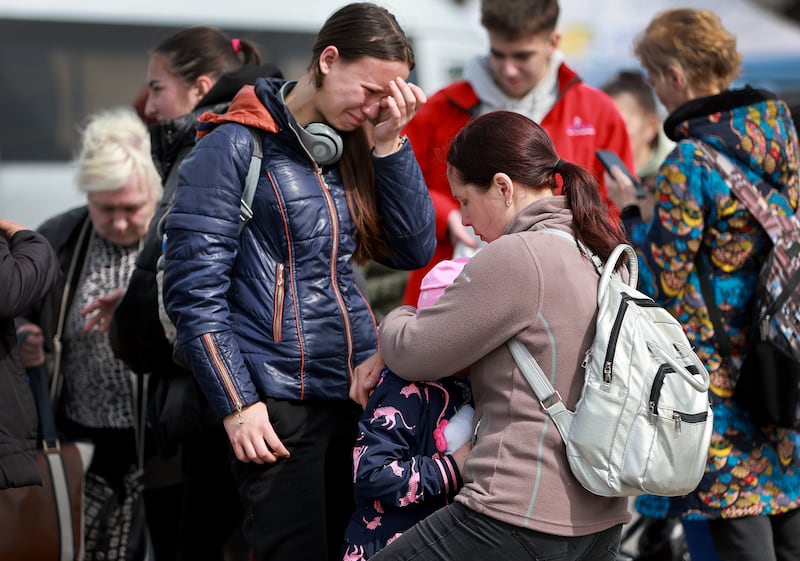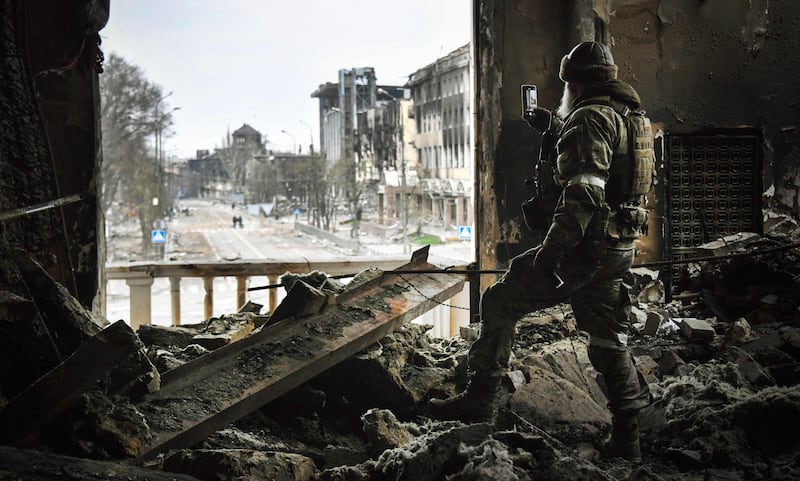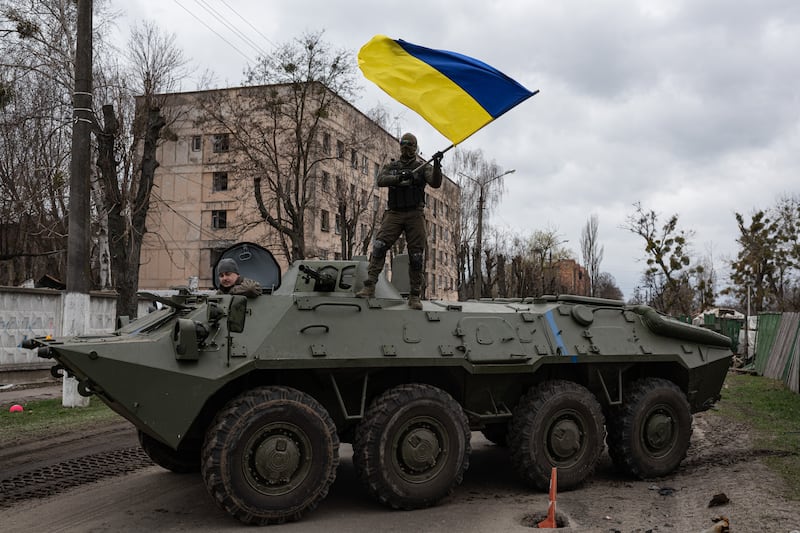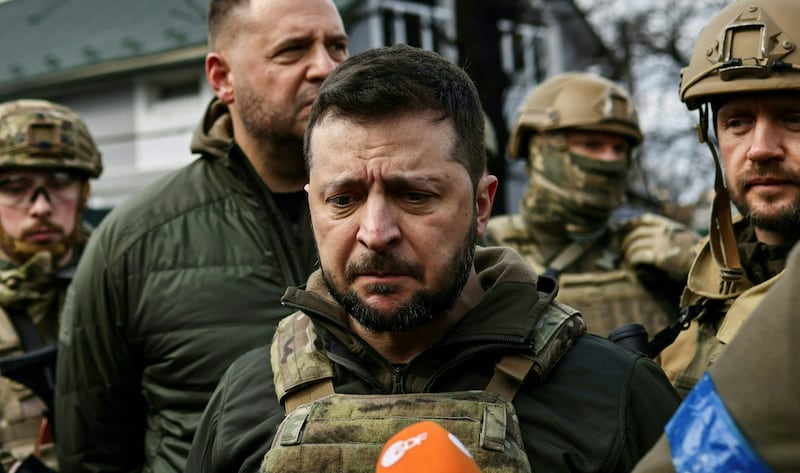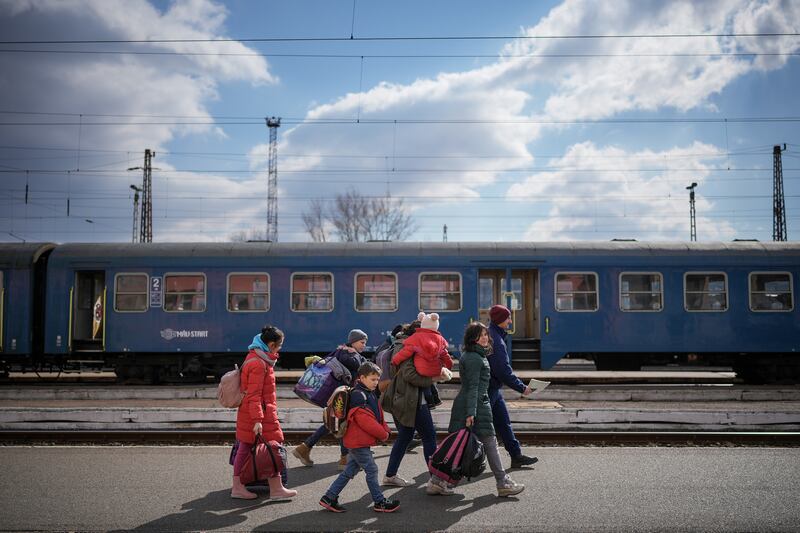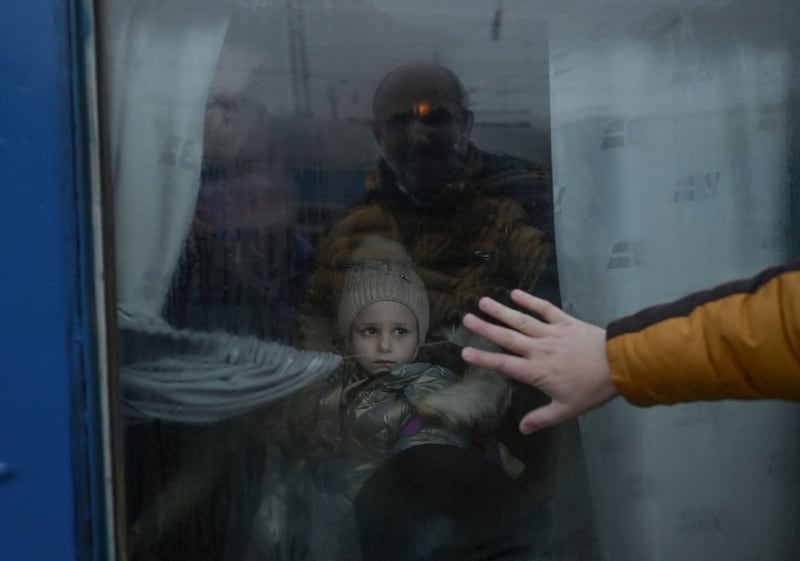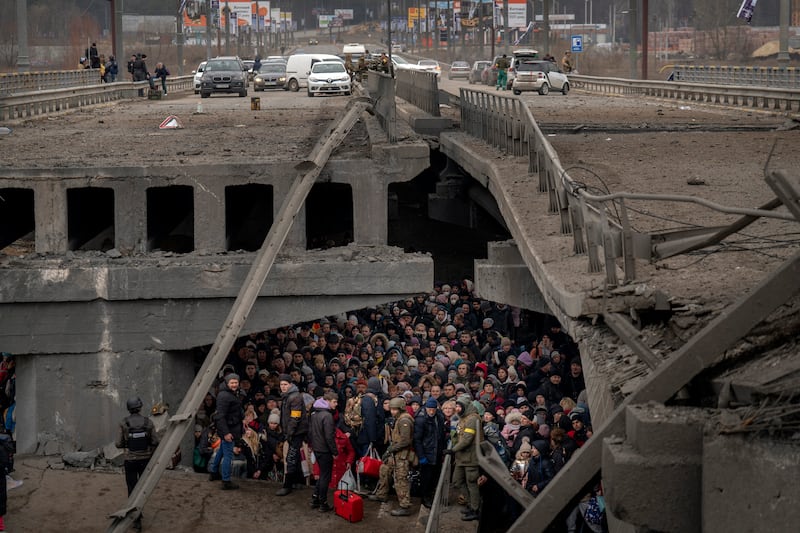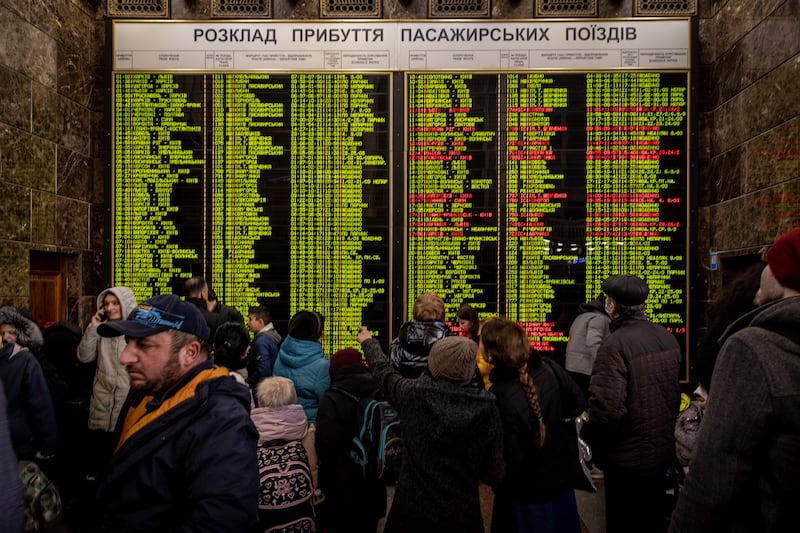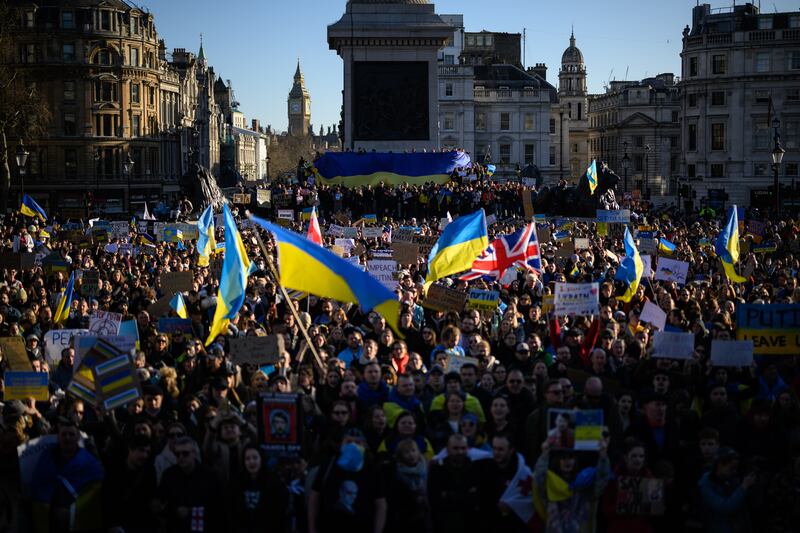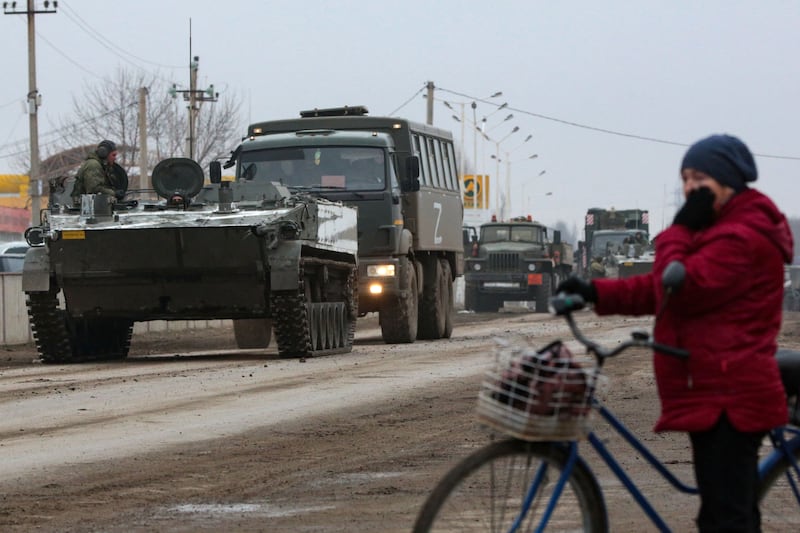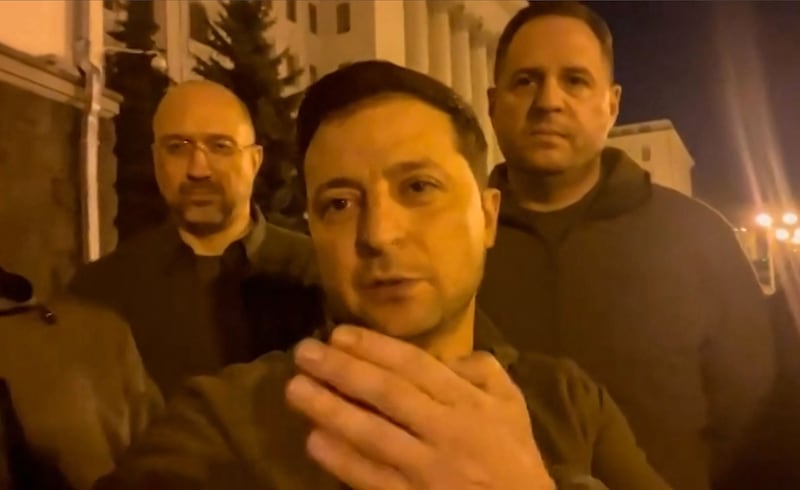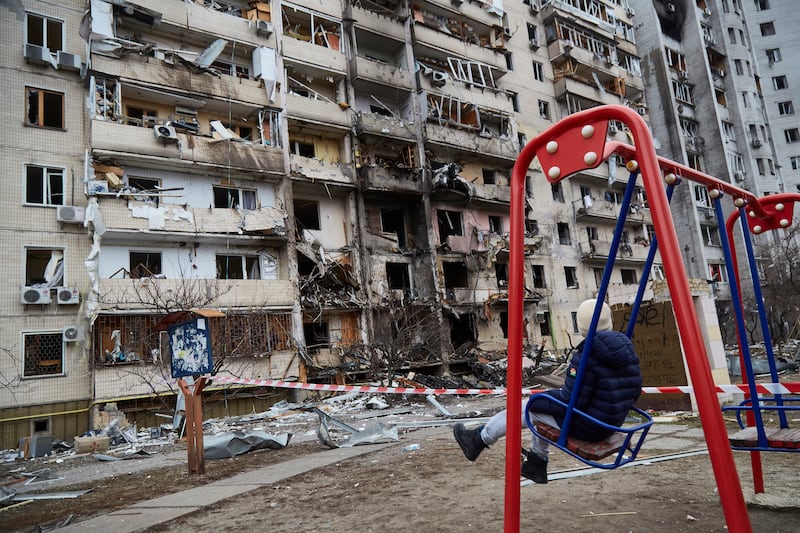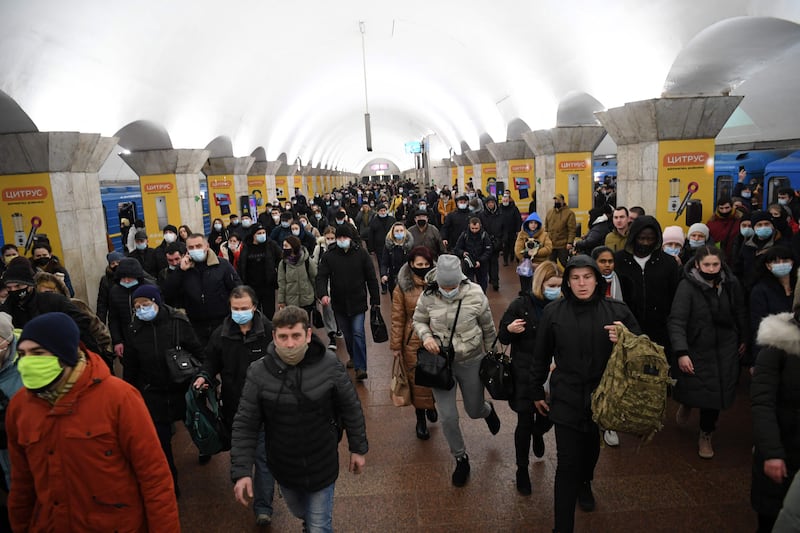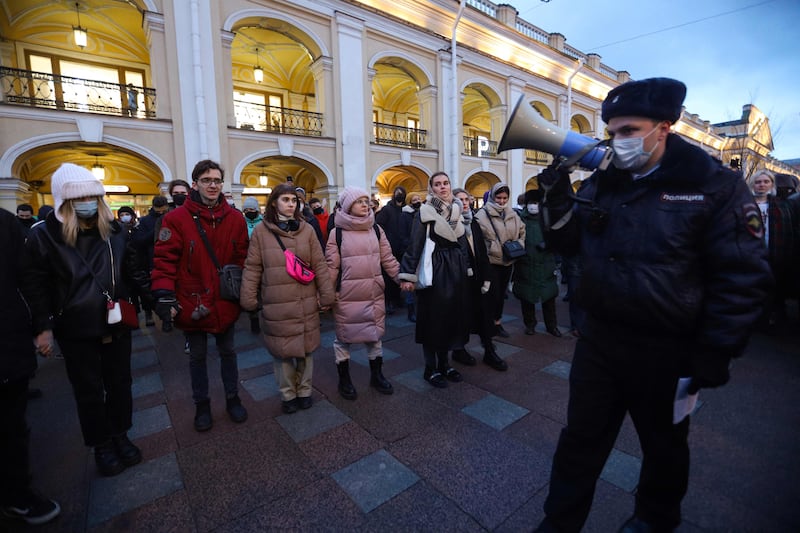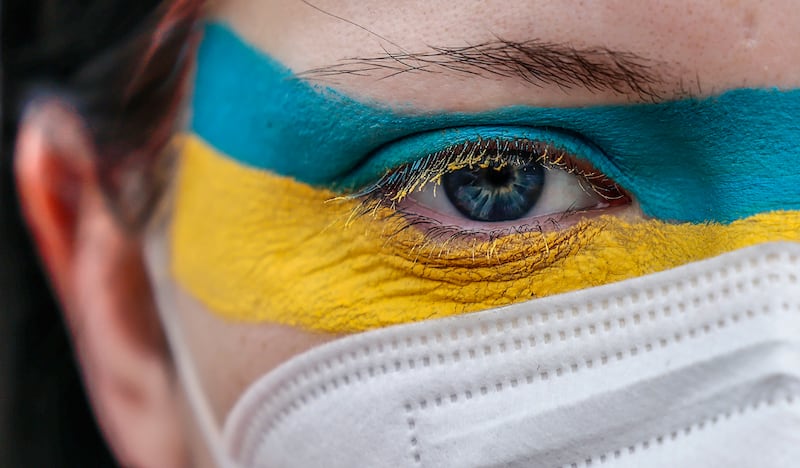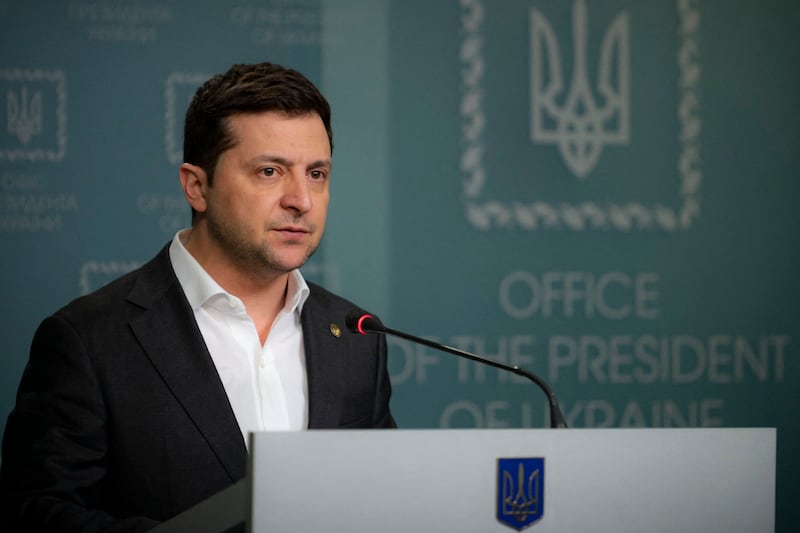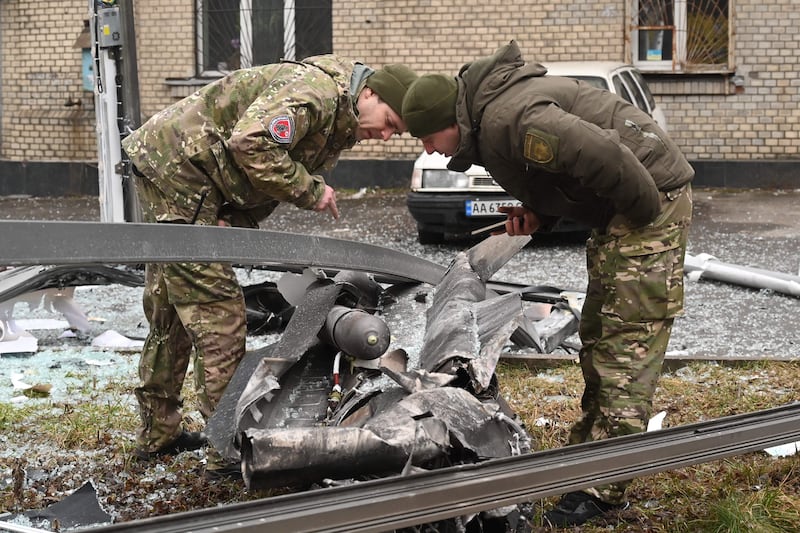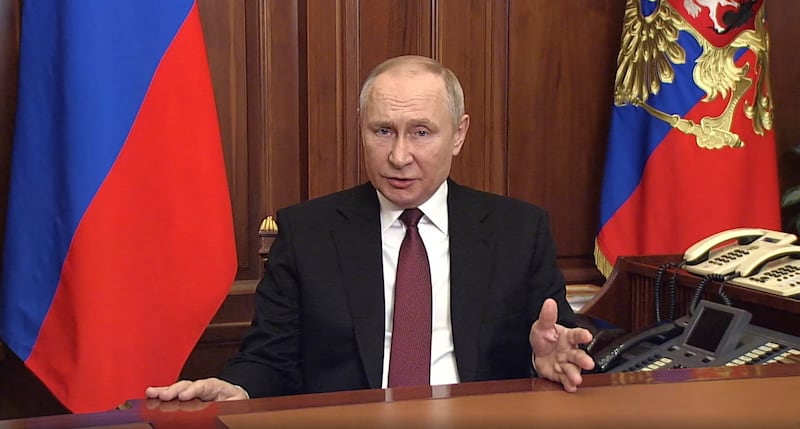After a year of war, the fighting between Russia and Ukraine has hardened into a bitter struggle for territory on the eastern front line.
Russia failed in its first goal of seizing Kyiv and its attempts to capture the east have been set back by military failures and Ukrainian counter-offensives.
Now, all eyes are on which side can gain the upper hand with a spring offensive, as Ukrainian troops learn to operate western tanks.
Phase one: Battle for Kyiv
Russia hoped to land the knockout blow in days.
The dawn invasion began with a three-pronged ground attack from Crimea, Belarus and eastern Ukraine. Missiles flew into Ukrainian command posts and Russia’s Black Sea fleet entered Ukraine’s waters.
Within two days, Russian troops were 30 kilometres from Kyiv and there was fighting in the city’s outskirts.
But the blitzkrieg soon went wrong. Russia faced fierce Ukrainian resistance, struggled with supply lines and needed 10 days to gain a foothold at a Kyiv airport.
“It’s very difficult to account for stupid force employment,” said Jack Watling, a land warfare expert at the Royal United Services Institute (Rusi), who said Russia had fired too few missiles and chosen the wrong targets.
Although Russia soon encircled Kharkiv and Mariupol, the column advancing on Kyiv was slowed by fuel shortages and US-provided Javelin anti-tank missiles.
From the streets of the capital, Ukraine’s President Volodymyr Zelenskyy rallied the resistance with his defiant presence.
By late March, the convoy had dispersed, Ukraine had retaken towns and it was clear Russia had failed to encircle Kyiv. The capture of southern Kherson was Russia’s only major victory.
On March 29, Russia announced it was scaling down operations near the capital. While Moscow framed the retreat as a peace offering, it was clear Ukraine had won the battle for Kyiv.

Phase two: Struggle for Donbas
After defeat in Kyiv, Russia turned its focus to the eastern Donbas region.
With heavy fighting and shelling, it sought to occupy the regions of Donetsk and Luhansk where Kremlin-backed separatists had held territory since 2014.
In a particularly bitter struggle, Russia claimed control of the Donetsk city of Mariupol after besieging a steelworks from which hundreds of civilians were evacuated.
By early July, Ukraine’s troops had been forced out of the city of Sieverodonetsk, their last major stronghold in the Luhansk.
Elsewhere, the two sides blamed each other for fighting near the Zaporizhzhia nuclear power plant that led to fears of a radioactive nightmare.
Russia’s gains made it confident enough to arrange spurious referendums in Donetsk, Luhansk, Kherson and Zaporizhzhia that prompted President Vladimir Putin to announce their annexation.
But it lacked control over large parts of the four territories, especially in Donetsk, where Russia was making slow progress towards the city of Kramatorsk.
Russia also had the sinking of the Black Sea flagship Moskva, and reports of planes being shot down by friendly fire, to add to its list of setbacks.
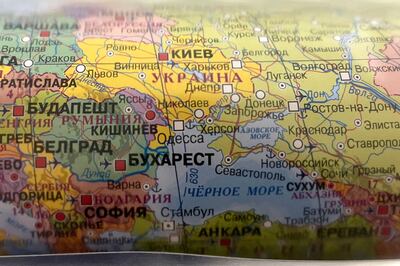
Phase three: Ukrainian offensive
The rapid gains of Ukraine’s autumn counter-offensive caught many by surprise.
Ukrainian troops reclaimed thousands of square kilometres of territory in a matter of days, forcing Russia towards the border near Kharkiv.
Russia appeared to have fallen into a trap by moving troops south in anticipation of a battle for Kherson, leaving its forces thinly spread in the north.
Ukraine was credited with making good use of US-provided HIMARS rocket launches to destroy bridges and cut off Russian supply lines.
In November, Ukraine retook Kherson, reversing one of Russia’s most significant victories and making a mockery of the supposed annexation.
Russia responded to the setbacks by announcing a partial mobilisation, calling up reservists and former soldiers.
As the cold set in, it began pounding Ukrainian infrastructure with long-range missiles and Iranian-supplied drones.
The strikes left millions without power but were seen by Ukraine’s allies as an admission of Russian failure on the battlefield.
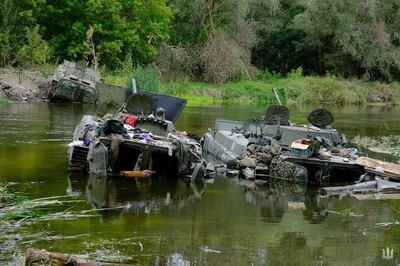
Phase four: Winter stalemate … and now?
Ukraine’s momentum did not last into winter, during which each side has taken heavy casualties without making significant gains on the front line.
In a bitter scrap for territory, Ukraine has clung to the city of Bakhmut but there are doubts about how long it can hold off a Russian encirclement.
Russia has likewise made gains around the town of Vuhledar but has yet to capture it despite inflicting substantial losses.
“Over the course of the winter, we saw the Ukrainians slowing down their offensive operations, trying to keep the Russians in the field but essentially preserve their combat power,” Mr Watling of Rusi said.
Russia has put its armed forces chief Valery Gerasimov in direct command of the invasion as it prepares a spring offensive.
One western official this week described the offensive so far as “more of a whimper than what we would have expected”, and expressed hope that the arrival of western tanks would help Ukraine make gains.
A Kyiv residential building - February 2022 and February 2023
“We've seen the Russians effectively set their defensive line once they were pushed out of Kharkiv,” they said.
“The Ukrainians have got a different challenge to meet. They need to go on the offensive if they’re going to take back territory. The way they can do that is by using manoeuvre rather than being stuck in a trench line which they are predominantly at the moment.”
Leaders on both sides are steeling their countries for a drawn-out conflict, with Britain’s Defence Secretary Ben Wallace on Thursday saying the war could well last another year.
As The National has witnessed, Ukrainian recruits undergoing training in Britain are being readied for a house-to-house, trench-to-trench conflict that many have compared to the First World War.
Mr Watling said the Russian offensive could either stretch Ukraine’s forces, preventing them from taking the initiative, or fail to make breakthroughs and leave some Ukrainian troops free to go on the attack.
“The next two to three months are likely to be decisive in setting the terms of exchange for the military conflict over the next year, and therefore determine how long this conflict protracts,” he said.
